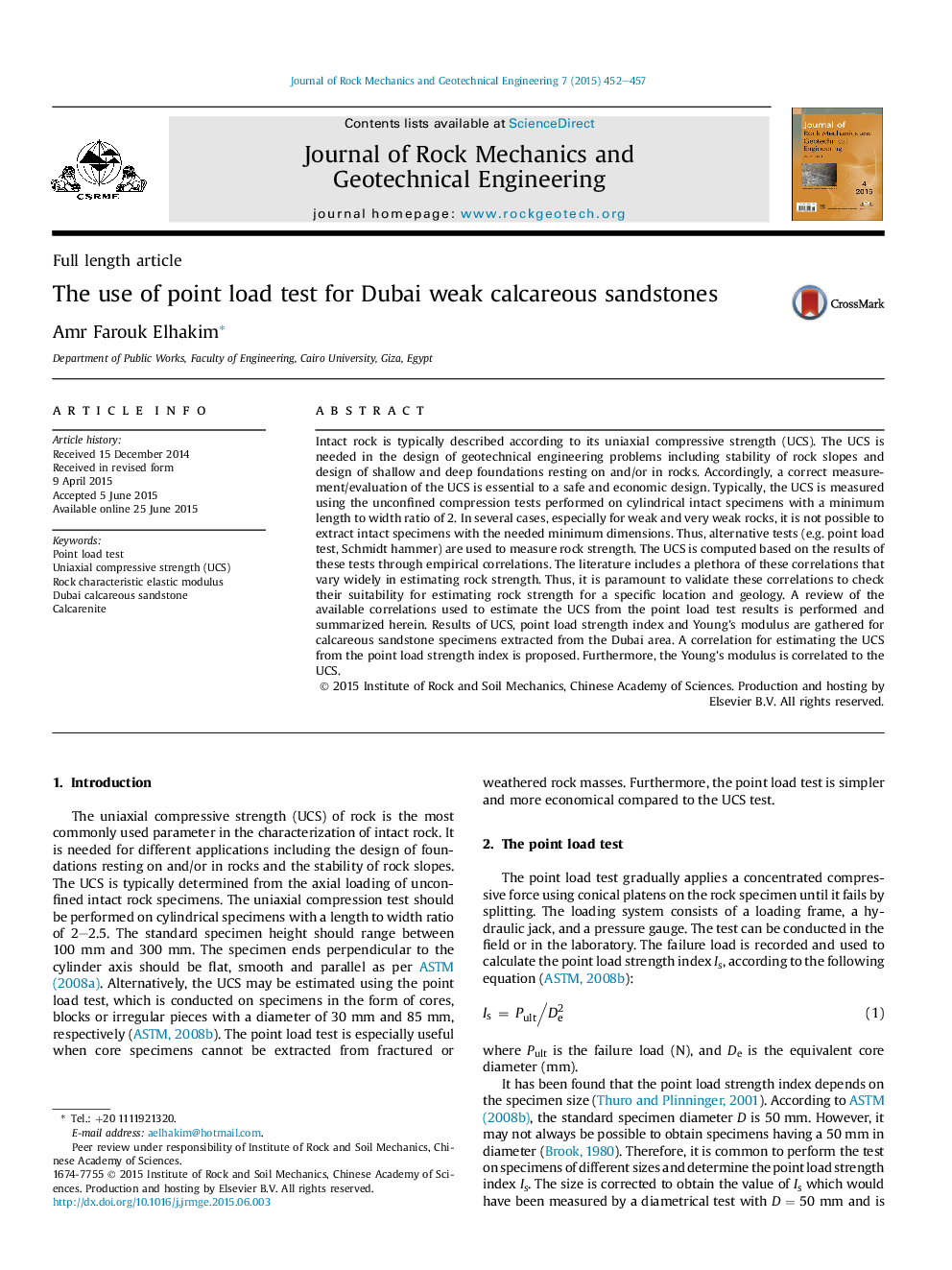| کد مقاله | کد نشریه | سال انتشار | مقاله انگلیسی | نسخه تمام متن |
|---|---|---|---|---|
| 286573 | 509490 | 2015 | 6 صفحه PDF | دانلود رایگان |
Intact rock is typically described according to its uniaxial compressive strength (UCS). The UCS is needed in the design of geotechnical engineering problems including stability of rock slopes and design of shallow and deep foundations resting on and/or in rocks. Accordingly, a correct measurement/evaluation of the UCS is essential to a safe and economic design. Typically, the UCS is measured using the unconfined compression tests performed on cylindrical intact specimens with a minimum length to width ratio of 2. In several cases, especially for weak and very weak rocks, it is not possible to extract intact specimens with the needed minimum dimensions. Thus, alternative tests (e.g. point load test, Schmidt hammer) are used to measure rock strength. The UCS is computed based on the results of these tests through empirical correlations. The literature includes a plethora of these correlations that vary widely in estimating rock strength. Thus, it is paramount to validate these correlations to check their suitability for estimating rock strength for a specific location and geology. A review of the available correlations used to estimate the UCS from the point load test results is performed and summarized herein. Results of UCS, point load strength index and Young's modulus are gathered for calcareous sandstone specimens extracted from the Dubai area. A correlation for estimating the UCS from the point load strength index is proposed. Furthermore, the Young's modulus is correlated to the UCS.
Journal: Journal of Rock Mechanics and Geotechnical Engineering - Volume 7, Issue 4, August 2015, Pages 452–457
